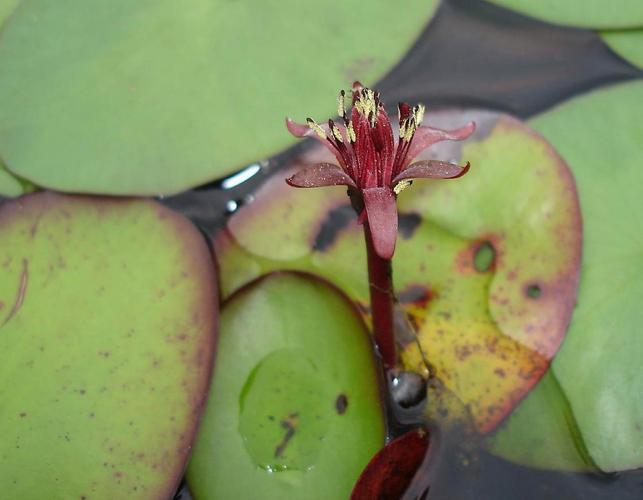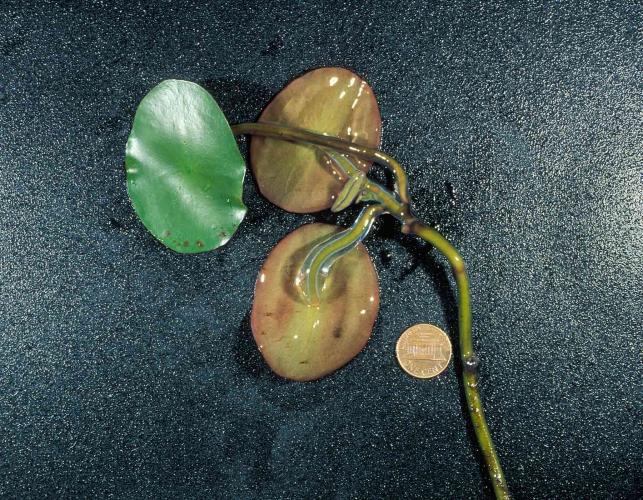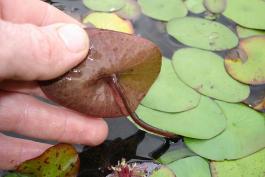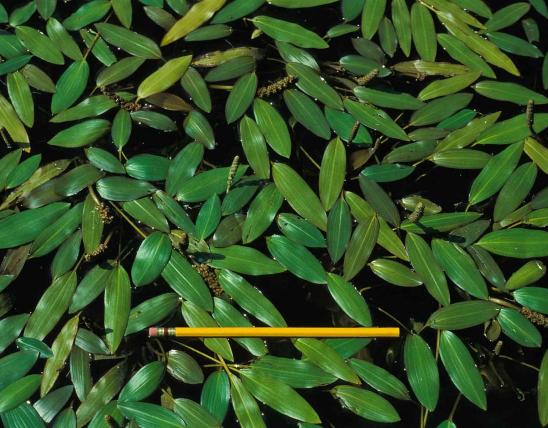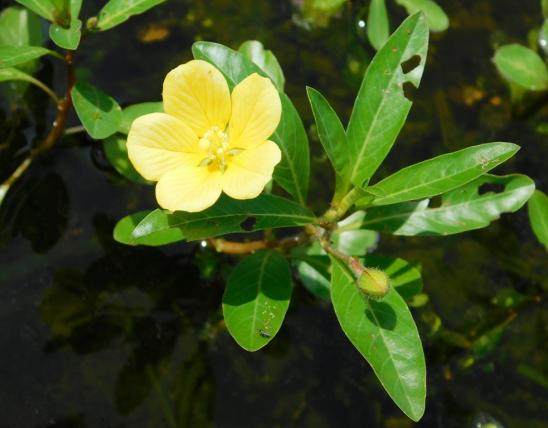
A perennial aquatic plant with long, branching stems and floating oval leaves that may reach 4–5 inches in length and resemble small water lily leaves, only without a split. There is a thick, jellylike covering on the young stems, buds, and lower leaf surfaces. Underwater parts have a reddish or purplish tinge. It spreads quickly via rhizomes. Flowers are small, reddish purple, and not showy; they are held above the water’s surface.
Similar species: Water lilies (Nymphaea spp.) have large, showy flowers and leaves that are split or cleft.
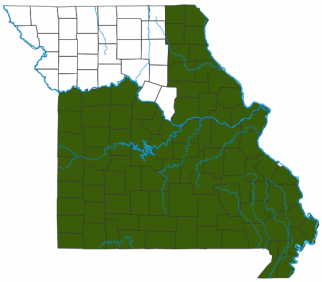
Scattered, mostly in southern and eastern Missouri.
Habitat and Conservation
A floating-leaved aquatic in ponds, lakes, and sloughs. The thick, jellylike coating of the submerged parts probably retards drying out of the plants when water levels drop during droughts. It may also deter animals — from mammals to snails — from eating the leaves. Worldwide, this is the only species in the genus Brasenia. Its closest relatives are in the genus Cabomba, including the fanwort that is a popular aquarium plant. Except for the flowers, fanwort looks quite different from water shield.
Control
Human Connections
Young, tender leaves and shoots have served as salad greens and as a delicacy in Japan and China. The tuberous roots were eaten by Native Americans in California.
Ecosystem Connections
The floating leaves afford shade and shelter for fish and other aquatic organisms. But it is also one of the worst nuisance plants in Missouri’s shallow ponds and lakes. It spreads rapidly and can cover the surface of a pond in a few years, keeping light and oxygen from penetrating the water.
